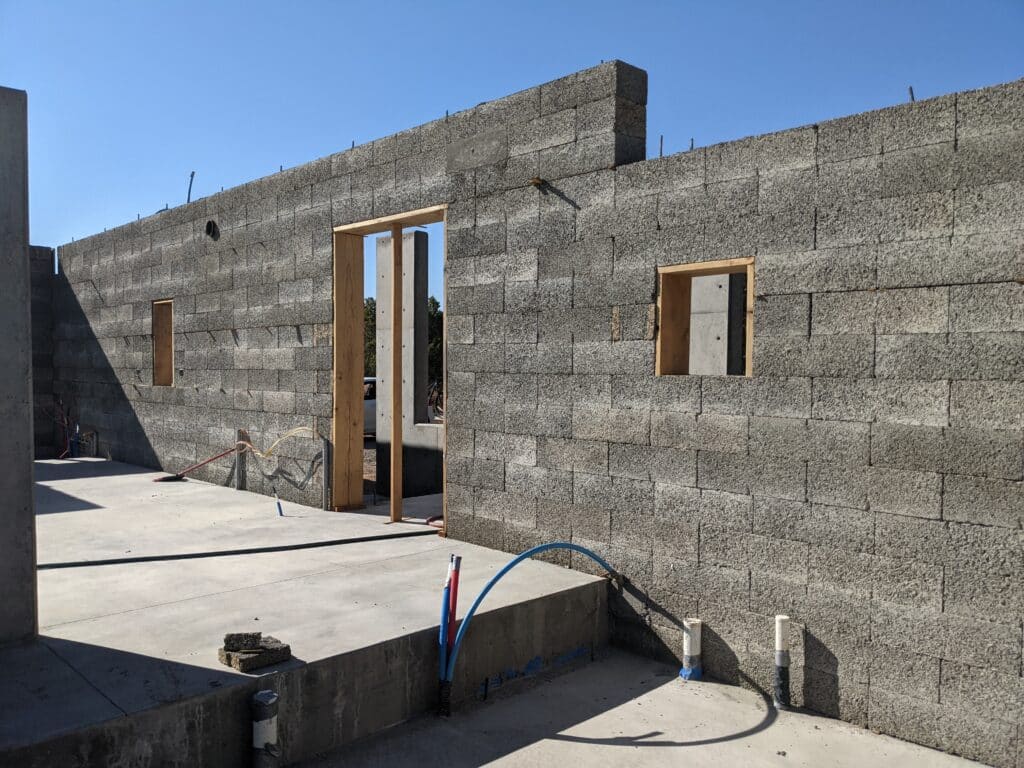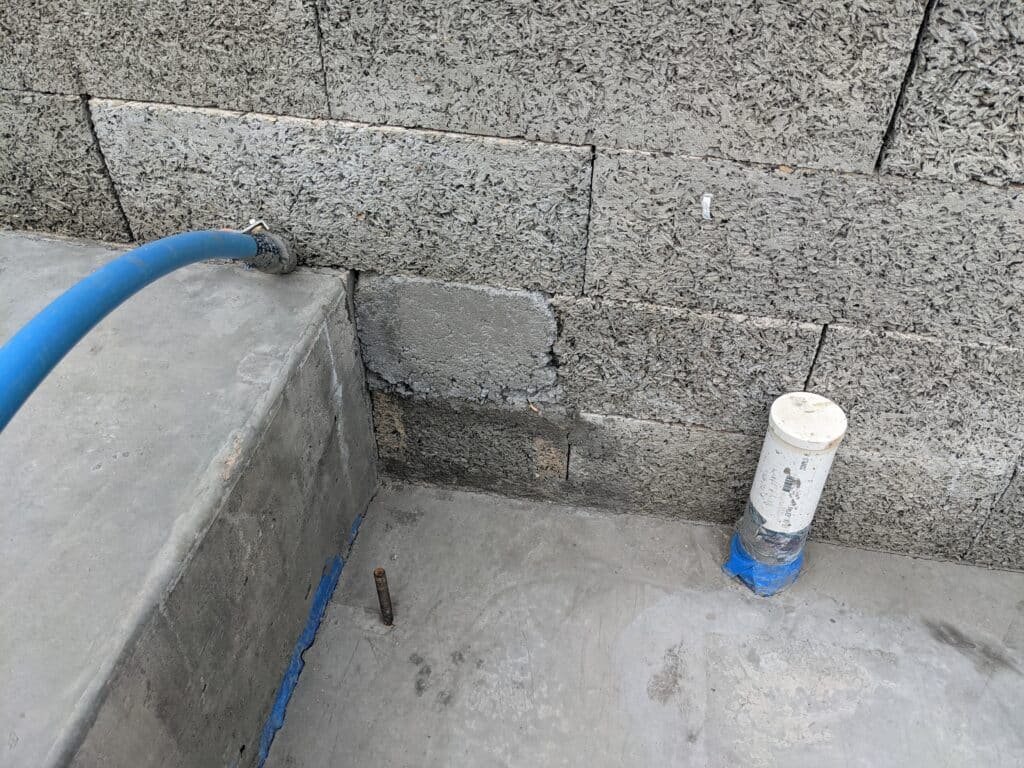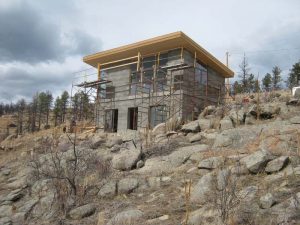If you’re new to building with ICFs or composite ICFs (which Faswall is), you may have had people try to steer you away from this construction method due to concerns about potential “blowouts.” But as anyone regularly building with ICFs or composite ICCFs can reassure you, blowouts are no longer much of a concern.
A blowout in ICF wall construction happens when a bulge or breach in the concrete forms due to pressure from the liquid concrete during the pour or cure phase breaks through the bracing, concrete placement and/ or consolidation.

Back in the day, ICF construction was a relatively unknown type of construction, so builders naturally had a “learning curve” where they made mistakes that resulted in blowouts. Years ago, concrete blowouts used to be more common because the composition and strength of the ties and bracing that held ICF blocks together were not as robust as they are today.
Also, ties may have been placed farther than 8 inches apart (either by inexperienced contractors or for other reasons), and, the foam or composite that comprises the ICF itself was not as thick as it is today. Blowouts can also result from using the incorrect concrete mix and/or installation, for the job — these are almost all situations that are avoided by using a wood chip/cement block like Faswall.
Blowouts Are Rare With Faswall
Blowouts have always been less common in composite ICFs than foam ICFs. Faswall blocks are made of 85% mineralized recycled wood and 15% cement. The blocks by themselves are sturdier than other ICFs, and require less bracing. This alone helps resist blowouts. The blocks easily stack, and are held in place by the interlocking tongue-and-groove end design. Then rebar is set both horizontally and vertically within the stacked forms prior to filling the cores with concrete. This “post and beam” grid effect makes the concrete and composite wall exceptionally strong and much less susceptible to blowouts or bulges during the concrete pour.
Correct Alignment, Plumb, and Placement Lowers Risk of Concrete Blowouts
To lower the risk of blowouts, be sure to follow the Faswall general application and stacking instructions. Here are some of the important things to consider:
- Set the corner wall forms around the perimeter by following the diagramed pattern.
- Always lay wall-forms working from the corners toward the center point of the wall run.
- Use the guide groove located at the top center of each wall-form to keep vertical alignment of cells. Every two-foot long wall form has a guide groove at the midpoint. Be vigilant that this guide groove lines up with the joints of the wall forms in rows above and below the guide groove. This alignment ensures that the interior vertical column of concrete and rebar maintain plumb.
- Every other row of wall forms must be flipped in order for the cut-out channel in the wall form to create a horizontal bond beam. Stack the wall forms flat surface to flat surface followed by notched surface to notched surface for the next course. Remember, “Flat to Flat, Notch to Notch.”
- Use corner boards, braced plumb, as a guide to keep the wall plumb and level.
- Tap any protruding wall forms flush using a rubber mallet. Plumb wall sections using strongback bracing as necessary.
Some concrete may occasionally ooze out of the wall. Faswall recommends that builders prepare patch kits and bracing in advance to be ready if this happens. Make patch kits from 2×3-foot or 3×4-foot scraps of plywood and 3-inch coarse threaded deck screws. Keep these items close for quick application over any weakened wall section. This is a “bandaid” which you can put over the blown-out piece of Faswall and force the piece back into position. Then lock it all in place with the screwed-on plywood patch.
Faswall Blowouts – Modified or Damaged Block
If Faswall blows out, it is usually to the inside of the wall. It is almost always due to blocks that have fractured in handling and installation, or at blocks that have been modified and cut.
Air pockets can form in a wall during the concrete filling process. If you have impermeable walls (foam ICF walls, example), that air pocket can be compressed with the weight of the concrete, build pressure, then blow out the foam wall. Faswall passes air through it during filling, so there is no danger of high pressure air pockets.
If there is a blowout with Faswall, you normally do not have a large explosion of concrete coming out. It is a slower “leak” of concrete that is easy to deal with.

Bottom Line: Blowouts Are Rare
Bottom line: Blowouts are rare. But they can be dealt with quickly with minimal downtime and minimal loss of concrete if they do occur.







